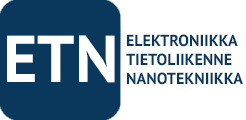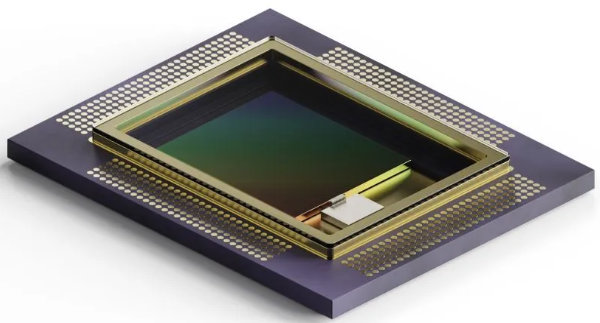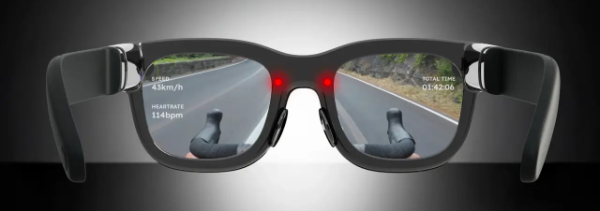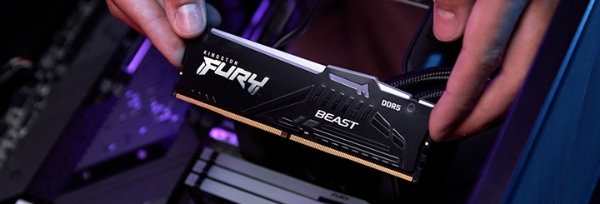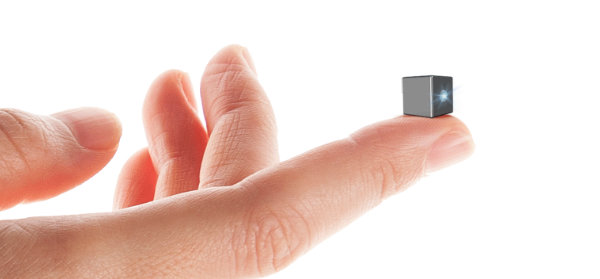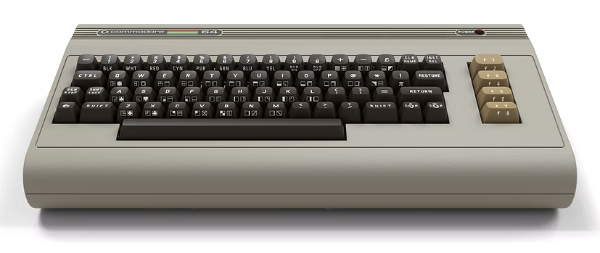
RF-järjestelmät tarvitsevat tehovahvistimia (PA) tuottaakseen lineaarisesti tehokkaan korkean lähtötehon. Kun järjestelmät siirtyvät korkeamman asteen modulaatiomenetelmiin, kuten 64/128/256 Quadrature Amplitude Modulation (QAM), niiden on myös tarjottava korkea lineaarisuus ja tehokkuus tiheämmissä ympäristöissä, joissa huippu-keskimääräinen tehosuhde on tiukka.
Kirjoittaja Baljit Chandhoke, Microchip Technology
Uuden sukupolven galliumnitridi (GaN) piikarbidin (SiC) monoliittisilla MMIC-piireillä tarjoaa ratkaisun näihin haasteisiin suurimmalla tehotiheydellä korkean lineaarisen lähtötehon tuottamiseksi korkealla hyötysuhteella. Tässä artikkelissa käsitellään 5G-, satelliittiviestintä-, ilmailu- ja puolustussovellusten vaatimuksia, mukaan lukien erityyppiset säteenmuodostusarkkitehtuurit ja kuinka GaN on SiC -tehovahvistimet ratkaisee viestintähaasteita näissä RF-sovelluksissa.
RF-mahdollisuudet ja -haasteet
RF-tehovahvistimien suurimmat kasvumahdollisuudet ja haasteet ovat satelliittiviestinnässä sekä uusissa 5G-viestintäratkaisuissa. NASA on antanut yksityissektorin yrityksille mahdollisuuden laukaista tuhansia matalan maapallon kiertoradan (LEO) satelliitteja, jotka nyt kiertävät maata ja tarjoavat laajakaistaisen Internet-yhteyden, navigoinnin, merenkulun valvontaa, kaukokartoitusta ja muita palveluita. Nämä RF-sovellukset etsivät jatkuvasti koon, painon, tehon ja kustannusten etuja. Suuret lautasantennit korvataan vaiheistetuilla ryhmäantenneilla satelliittiviestinnässä, jotka vaativat pienempikokoisia komponentteja integrointiin sekä kevyempiä komponentteja. Suuri RF-teho, joka on lineaarinen korkean P1dB:n ja IP3:n kanssa, vähentää vääristymiä ja on tehokas korkealla PAE-arvolla minimoimaan virrankulutuksen, on olennainen näille RF-sovelluksille.
Alla ETNdigi-lehden numerossa 1/2024 ilmestynyt artikkeli kokonaisuudessaan.
5G REQUIRES BETTER POWER AMPLIFIERS
A new generation of Gallium Nitride (GaN) on Silicon Carbide (SiC) Monolithic Microwave Integrated Circuits (MMIC) PAs offers a solution to these challenges with the highest power density to generate high linear output power with high efficiency. This article goes into the requirements of 5G, satellite communications, aerospace and defense applications including the different types of beamforming architectures and how GaN on SiC Power Amplifiers are solving the communication challenges in these RF applications.
RF PA OPPORTUNITIES AND CHALLENGES
The biggest growth opportunities and challenges for the RF power amplifiers are in satellite communications, as well as emerging 5G communications solutions. NASA has enabled private-sector companies to launch thousands of low-Earth-orbit (LEO) satellites that are now circling the earth and delivering broadband Internet access, navigation, maritime surveillance, remote sensing and other services. These RF applications consistently seek Size, Weight, Power and Cost (SWaP-C) benefits. Large dish antennas are being replaced with phased array antennas for satellite communication that require smaller size components for integration, as well as lower weight components. High RF power, which is linear with high P1dB and IP3, to reduce distortion and is efficient with high PAE to minimize power consumption, is essential for these RF applications.
MILLIMETER-WAVE 5G COMMUNICATIONS
New generations of millimeter-wave 5G communication solutions, by virtue of their speed, ultra-wide bandwidth and low latency for broadband communication, is substantially increasing how much information can be shared in support of real-time decision-making and other military applications. 5G systems operating in lower frequency bands (sub 6 GHz) have been vulnerable to high-power jamming signals, but 5G millimeter-wave (24 GHz and above) systems are bringing 5G networking to both on-battlefield and off-battlefield applications with the millimeter wave band that is not as vulnerable to high-power jamming signals. Examples include battlefield sensor networks for command-and-control data gathering, and augmented reality displays that enhance situational awareness for pilots and infantry soldiers. 5G will also enable virtual reality solutions for remote vehicle operation in air, land and sea missions. Off the battlefield, 5G will enable a variety of smart-warehouse, telemedicine and troop-transportation applications.
5G MMWAVE FREQUANECY BANDS
Different countries have different bands for 5G mmWave. In the United States, 28 GHz was the first 5G mmWave band deployed, which is being followed by 39 GHz. China is deploying 5G mmWave in the 24.25 – 27.5 GHz and have lagged in the adoption of the 5G mmWave.
5G NETWORK ARCHITECTURE
5G network is composed of macro base stations and small cells. Macro base station is connected to the core network using mmWave Back haul or fiber optic links. Macro Base stations can talk directly to the user equipment cell phones or can talk to the small cells which talk to the user equipment mobile device providing the last mile connectivity. There are pico cells and femto cells which provide network connectivity inside office buildings where the connection might be weak or which have high user density.
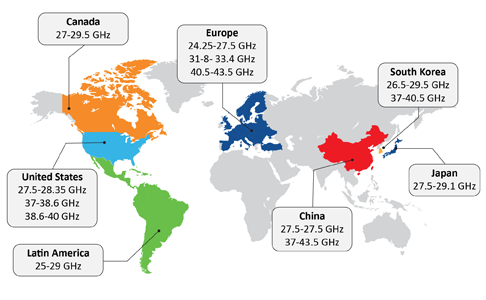
5G mmWave Frequency Bands Globally.
Femtocells are typically user-installed to improve coverage area within a small vicinity, such as a home office or a dead zone within a building. Femtocells are designed to support only a handful of users and are only capable of handling a few simultaneous calls – they have a very low output power up to 0.2Watts.
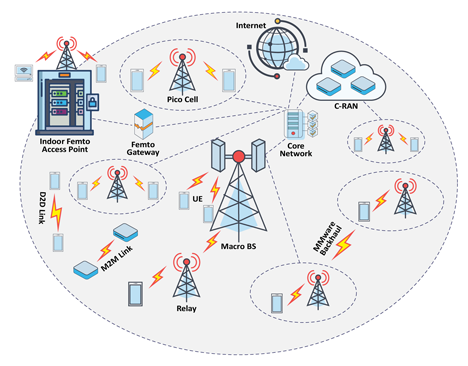
5G Network Architecture Comprising of Small Cells and Macro Base Station.
Picocells offer greater capacities and coverage areas, supporting up to 100 users over a range up to 300 metres. Picocells are frequently deployed indoors to improve poor wireless and cellular coverage within a building, such as an office floor or retail space. Picocells can be deployed temporarily in anticipation of high traffic within a limited area, such as a sporting event, but are also installed as a permanent feature of mobile cellular networks in a heterogeneous network working in conjunction with Macro cells to provide uninterrupted coverage for end users. They have an output power up to 2 Watts.
Macro base stations – are large base stations covering a large area > km and have output power of up to > 100 Watts.
RADAR COMMUNICATION APPLICATION
Radar systems operate in the 1 Gigahertz (GHz) to 2 GHz L band for applications including “identify friend or foe,” distance-measuring equipment, and tracking and surveillance. S band (2 GHz to 4 GHz) is used for selective response Mode S applications and for weather radar systems. X Band (8 GHz to 12 GHz) is used for weather and aircraft radar, while C Band (4 GHz to 8 GHz) is used for 5G and other sub- 7 GHz communications applications. 5G mmWave provides the highest bandwidths and data rates, operating in 24 GHz and higher frequency bands. Satellite communications for LEO and geosynchronous communication operate in the K band, which spans from 12 GHz to 40 GHz.
RF BEAMFORMING
Different types of Phased Array Beamforming architectures used in these RF applications are:
1. Analog Beamforming
2. Digital Beamforming and
3. Hybrid Beamforming

Marine Radar communication uses frequencies in the S-band, L-band, C-Band, X-Band all the way up to Ku/Ka band.
ANALOG BEAMFORMING
For any Phased Array, the ideal separation between elements is wavelength lambda/ by 2.
The block diagram shows Analog Beamforming: There are four Phased Array elements separated by wavelength Lambda by 2. For a 30 GHz signal, it will be 5 mm separation between Phased Array elements. In Analog beam forming, the phase shifter does the beam forming by changing phase to do constructive interference for receiving and transmitting the signal by focusing the energy from the beam in a particular direction.

Block Diagram of Analog Beamforming with Four Phased Array Elements.
This is all done at RF Frequency hence is most sensitive to interconnect losses. Then the signal from the phase shifter goes to the power combiner/ splitter, followed by up down converter and ADC/DAC to the base band. In this case there is for N Phased Array elements there is only one Digital Front end. As seen in the block diagram, for 4 Phased Array elements, there is only one digital front end comprising of ADC/DAC. The benefit of this architecture is the smallest number of components, lowest power dissipation. However, as the phase shifting is done in RF bands – this type of beamforming architecture is most sensitive to interconnect losses and complexity in phase shifting.
DIGITAL BEAMFORMING
Digital Beamforming has traditional up down conversion to the baseband band frequency and then digital phase shifting is done. This architecture provides more precision as digital beamforming is done in the baseband. However, there is ADC/DAC for each phased array element resulting in large number of components and high-power dissipation. In this case for N Phased Array elements there are N Digital Front ends. As seen in the block diagram, for 4 Phased Array elements, there are 4 digital front ends comprising of ADC/DACs.

Block Diagram of Digital Beamforming with 4 Phased Array Elements.
HYBRID BEAMFORMING
Hybrid beamforming combining digital and analog beamforming is optimal for larger phased arrays to get the efficiency of analog beamforming with less number of elements, power dissipation and precision of digital beamforming. As seen in the block diagram, for 4 Phased Array elements, there are 2 digital front ends comprising of ADC/DAC. Comparing with Analog Beamforming there was only a single digital frontend ADC/DAC and with Digital beamforming there were 4 digital frontend ADC/DACs.

Block Diagram of Hybrid Beamforming with 4 Phased Array Elements.
RF SIGNAL CHAIN
The figure shows the RF Signal chain block diagram. At the receiver, the RF signal comes in through the antenna, goes through a limiter diode, followed by a switch and the desired RF frequency is selected through the saw filters. The desired signal is then amplified through the low noise amplifier with extremely low noise figure to minimize degradation in signal to noise ratio of the received signal. Then, it is down converted using a mixer. The local oscillator (LO) signal is generated using discrete PLL components comprising of phase frequency detector, pre-scaler to provide the LO frequency to the Mixer to down convert the signal to Intermediate Frequency (IF), followed by conversion from IF to baseband for signal processing.
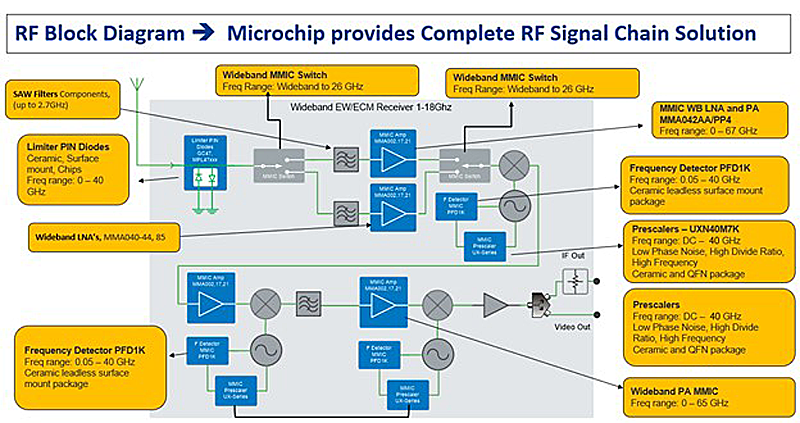
RF Signal Chain Block Diagram.
At the transmitter, the base-band signal is upconverted to IF and then to the desired RF frequency. The RF signal is amplified using a Power Amplifier to transmit the signal.
PA REQUIREMENTS
Power Amplifiers (PAs) play a key role at the transmitter in RF applications. One of the biggest PA requirements is that it can operate in its linear region to minimize RF distortion. Satellite communications systems that use higher-order modulation schemes such as 64/128/256 Quadrature Amplitude Modulation (QAM) are extremely sensitive to non-linear behavior. Another challenge is achieving satisfactory peak-to-average power ratio (PAPR)—that is, the ratio of the highest power the PA will produce to its average power. PAPR determines how much data can be sent and is proportional to the average power. At the same time, the size of the PA needed for a given format depends on the peak power. 5G mmWave Effective Isotropic Radiated Power (EIRP) requirements mandated by FCC include 43dBm EIRP transmit power for the Mobile handsets and Base Station Transportable Power of 55dBm EIRP. These and other conflicting challenges can only be met with GaN on SiC power amplifiers for satellite communication, 5G, aerospace and defense applications.
GaN ON SiC POWER AMPLIFIERS
GaN on SiC has the highest power density to generate high linear output power with high efficiency. GaN on SiC power amplifiers can operate at high frequencies in the Ka, Ku band from 12 GHz to 40 GHz for satellite communication, 5G and have broad bandwidths, high gain with better thermal properties, meeting the requirements of RF applications. Microchip provides RF solutions using GaN on SiC technology meeting the SWaP-C requirement for components. ICP2840 is a flagship device which operates in 27.5–31 GHz providing continuous wave (CW) output power of 9 watts and pulsed output power of 10 watts with a gain of 22 dB and power added efficiency of 22%.
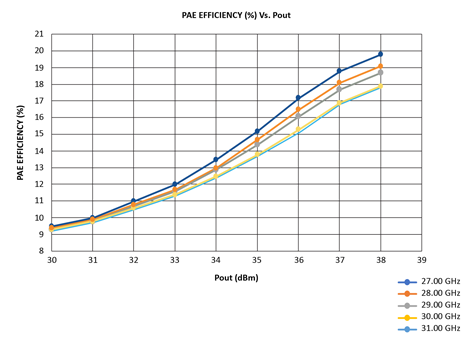
ICP2840 Linear PAE Across Frequency and Output Power Levels.
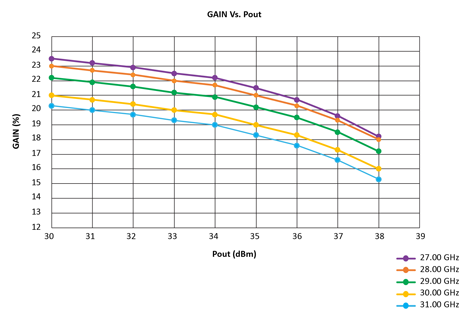
ICP2840 Linear Gain Across Frequency and Output Power Levels.
MICROCHIP K BAND POWER AMPLIFIERS
ICP2840 generates 9W continuous wave output power in the Ka band from 27.5–31 GHz for uplink frequency for satellite communication as well as 28 GHz 5G frequency band.
ICP2637 has a wide bandwidth from 23–30 GHz and generates 5 watts CW output power and is offered in a QFN package as well as in die form.
ICP1445 generates 35 watts pulsed output power in the 13–15.5 GHz frequency Band.
ICP1543 operates in the Ku band 12 to 18 GHz generating 20 watts CW output power.
These PAs have high gain and power added efficiency using GaN on SiC technology and meet the requirements at Ku/Ka band for 5G, satellite communication, aerospace and defense applications. GaN on SiC with its highest power density provides the optimal power amplifier solutions for these applications.
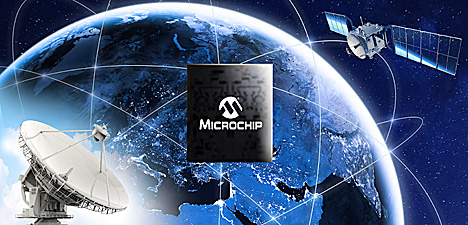
Microchip Technology’s Ku Ka band GaN on SiC MMIC Power Amplifiers include ICP2840, which generates 9W of continuous wave output power in the Ka band from 27.5 – 31 GHz for uplink.


